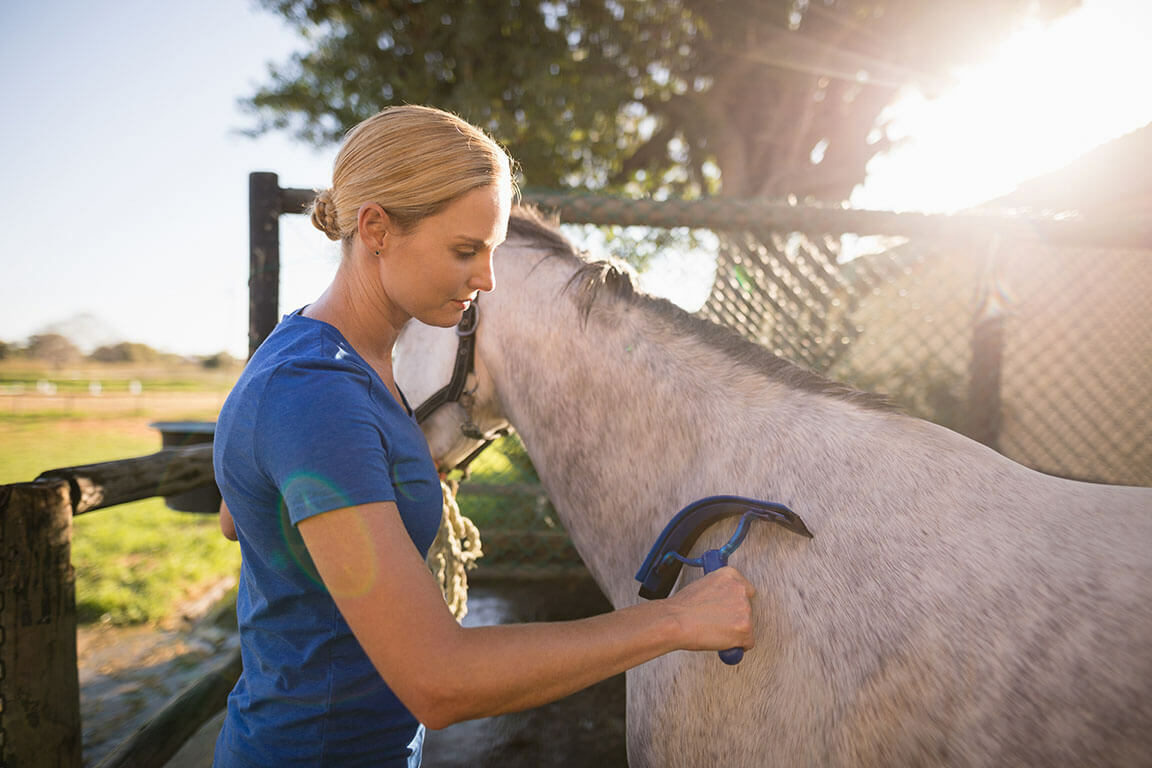How to protect your horse from heat stress
Jun 26th 2020

The image of buying sunscreen for your horse at first might seem pretty surreal. Unfortunately, the same blazing heat that causes us to feel dizzy and our skin to burn and peel also has its fair share of problematic effects for our horses - the most important of these being heat stress. The British Horse Society advise: “Our message is simple – horses need suntan cream and shade too. Owners need to be extra vigilant during a heat wave and hot weather.”
Read below some helpful tips on safeguarding your horse in the sweltering summer heat.
What is heat stress?
Heat stress, also known as heat exhaustion, normally occurs just after an intense period of exercise, as the large muscle mass of horses has built up a great amount of heat. Usually, sweating brings the body temperature right down, but if it’s scorching and the atmosphere is humid then this natural cooling effect isn’t effective - as sweat keeps pouring out, your horse starts to lose all-important water and electrolytes.
Without launching into a biology lecture, you lose fluids first from the bloodstream. After this supply is outrun, liquids are drawn from the inside of cells and this spirals into severe phases of dehydration.
Symptoms of heat stress in horses:
You should be able to spot the symptoms of heat stress after a heavy day’s training, but it can occur in some unexpected places too, like stuffy, unventilated stables and horse boxes. The unsettled signs you should be looking out for include:
- If your horse looks deflated, lethargic or has lost all energy to move around
- Unusually rapid breathing, approximate 60 breaths per minute
- Have a body temperature over 39.7 C (103.5 F)
- Occasional spasms of the diaphragm or “thumps” caused by loss of fluids
- An irregular pulse
- No interest in food or water
If in doubt, we recommend doing some quick physical tests for dehydration that you can perform yourself: the skin-pinch and the pink-gum tests. If you pinch your horse's skin and it takes a few seconds or more for the skin to flatten smoothly out again, then something might be up. Similarly, if you press softly on the gums just above the incisors and it takes longer than a few seconds for the capillaries to flush pink again, then start cooling down measures.
The uncomfortable truth is that the failure of these internal systems can lead to heat stroke, muscle cramps, altered gastrointestinal functions and major damage to the kidneys, liver, and lungs.
Tips for immediate cooling off:
As soon as you notice the tell-tale signs of heat exhaustion, you need to take action. Firstly, bring riding to a complete finish and move to a cool, shaded part of the field, then work through some basic rules:
- Keep your horse walking to maintain circulation
- Remove sweat from the horse’s body as layers of perspiration stops heat from escaping
- Allow them to drink as much water as they like to replace lost fluids
- Shower your horse with cold water or apply ice packs to head and leg muscles
- Continue to monitor temperature
In serious cases, if your horse’s temperature rises to above 40 C (104 F) and is not falling within the next 30 minutes then it’s necessary to call your vet.

Planning ahead:
As you can imagine, heat stress mostly crops up after a strenuous day of gallops and fast trots, so before you set out for the afternoon, try, and follow our top preventative tips:
- Give your horse a relaxing ‘pre-cooling’ shower before launching into a day of riding
- Always take enough water for your trip (obvious one, but absolutely essential)
- When taking long journeys, horses should be given regular breaks from the heat of the horsebox/trailer. You can also try installing air conditioning too.
- Higher factor SPF and waterproof horse-friendly sun creams are recommended - some products will even contain UV filters perfect for horses with sensitive or allergic skin.
- If your horse is bothered by flies in the summer and requires a fly sheet or rug then ensure you get one that offers UV protection as this can help protect them from the sun. However, bear in mind that even a thin fly sheet can trap heat underneath so in really hot weather can be more of a hindrance than a help.
- Look at your turnout routine, possibly choose to turnout at cooler times of the day or at night and then stable during the day.
- Check the day’s “heat index” and see how it might affect your training regime. Rough guide is as follows:

If you have any experiences of heat stress or useful tips we haven’t included, then please get in touch over Instagram and tell us about them!




